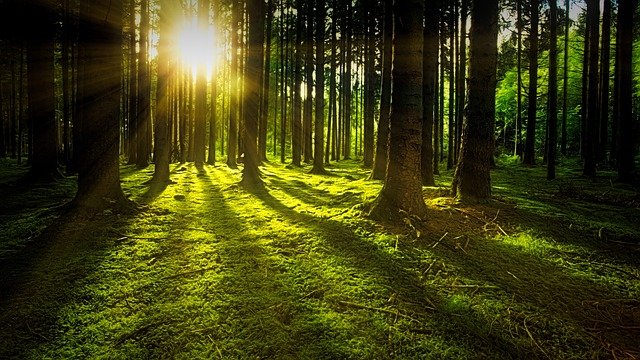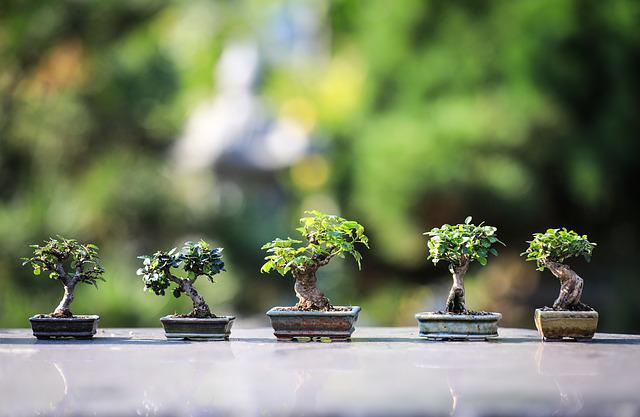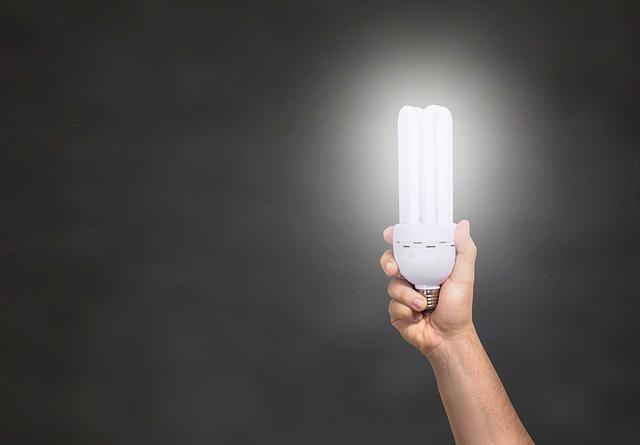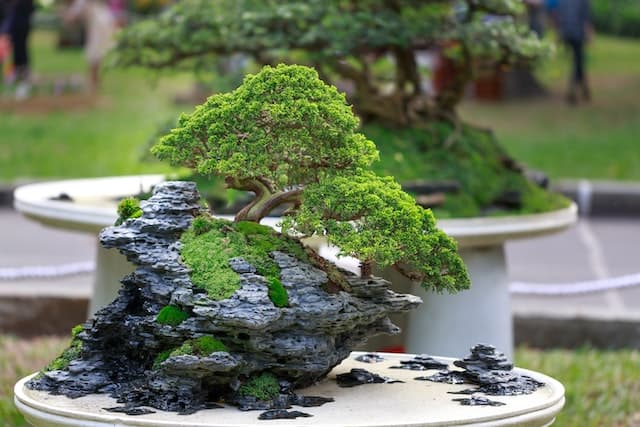Maybe you’re one of those who are immediately enamored with bonsai trees. However, we can’t blame you, as this living artwork is truly unique.
Buying a premade bonsai tree is more manageable. It is cheaper and quite an exciting art to prune, style, and develop your bonsai tree. However, don’t let the big name “bonsai ” scare you; it simply translates to “plant in a container.” Bonsai is a Japanese word that translates to cultivating and nurturing small plants in a tray or any container. Whether you’re a seasoned gardener or just starting out, caring for a bonsai tree can be a rewarding and fulfilling experience that allows you to express your creativity and connect with nature.
Do you love and admire other people’s bonsai trees and wonder how they do it? Do you always wonder about bonsai trees’ mint leaves turning brown? Or how much light does a bonsai need? Then your answers await you in this post.
Everyone wants one, so if you’ve come to the stage where you’re prepared to make a bonsai tree home, this post is for you.
A bonsai is too much of a treasure to lose, so keep reading to discover How much light your bonsai tree needs.
How Much Light Does a Bonsai Tree Need?

Remember that bonsai is not a species of tree but a tree in a container. With this knowledge, it should be easier to establish that there are no ideal generalizations on how much a bonsai tree needs since it all depends on the type of plant chosen for bonsai.
Since bonsai can be virtually any specie of tree, most people say bonsai plants require around five to six hours of sunlight daily. But like their natural and bigger counterparts, they naturally prefer sunlight and cannot be quantified.
Trees are often quite taller than other plants and require more light consequently. So, it is a rare occurrence for sunlight to harm a bonsai. However, since they are not in the natural environment, you may see succulent leaves curling down or burning due to excessive light if exposed beyond measure.
Aside from the concern over intensity, grow lights can alternatively serve as a suitable means of providing light for a bonsai. So as long as the light maintains a normal range or distance with the bonsai tree, a bright artificial light will do. The bonsai and the artificial light source should maintain twelve inches apart.
Factors Affecting Light Requirements for Bonsai Trees
Understanding the various factors that influence the light requirements of bonsai trees is crucial for their healthy growth. Factors such as the species of the tree, its natural habitat, and the specific needs of the tree should be considered when determining the amount of light it requires.
Different species have varying light preferences, and it is essential to research and understand the specific requirements of the bonsai tree you are caring for.
Positioning Your Bonsai Tree
Choosing the best location for your bonsai might be arduous, as you will need to get the right amount of light for your bonsai tree. This is because you must consider various criteria, for example, temperature and season).
Any living environment that has bonsai in it feels tranquil and natural. It adds something unique and fascinating to a space because it is a mothering and welcoming feel.
We appreciate the concept of putting a bonsai in an office setting because it is known for its serenity. Therefore, a bonsai would be perfect for brightening up their office. But what is the ideal place for a bonsai to get enough light as it requires? The tree type and location of the Bonsai, whether indoor or outdoor, ultimately determines its lighting needs.
1. Indoor Bonsai

In most homes, the perfect place for a bonsai to thrive is right next to a south-facing window because, as we know, the tree requires lots of light to stay healthy. Unfortunately, the optimum light required for the growth of your bonsai will substantially decrease when put even a short distance from a window. As a result, the growth is limited, and the subsequent death of your precious bonsai may occur.
So, some species of plants can thrive better indoors than others. Subtropical tree species that make great indoor door bonsai are:
- Ficus
- Jade
- Sweet plum
- Fukien tea
- Carmona
2. Outdoor Bonsai
Concerning the weather and temperature of where you reside, most bonsai trees may need to stay outside almost all year round. This is because most bonsai trees need the annual cycle to stay healthy; for example, hiding your trees from sunlight or protecting them too much can cause them to become weaker.
Place your outdoor bonsai in a well-lit area; of course, the light source for outdoor bonsai trees is mainly sunlight. However, your precious little bonsai will thank you if you provide some shade during hot summer.
Some outdoor bonsai are
- Japanese Maple
- Junipers
- Chinese Elm
- Pomegranate
How Do I Provide Light for My Indoor Bonsai?
So you’re already thinking of what to do during cold winters with insufficient sunlight. Don’t worry anymore; there’s always a solution to every problem, including bonsai lighting.
However, you will not use any light bulbs but the right ones. The following are some artificial light sources:
1. LED Light

Due to their powerful light output and low power consumption, LEDs are a top choice for indoor plant lighting. The reason is that they lower household expenditures associated with maintaining your plants.
Also, LEDs don’t generate much heat, making them fit for use close to the plant. But it would help if you still didn’t get them too close. In addition, not only do LEDs stay longer, but they also have a light spectrum that is closest to that of the sun.
2. HID Lights
A high-intensity discharge (HID) light can work well to encourage vigorous growth. These lights will aid in giving your bonsai plant the energy it requires to flourish. But their power is a bit on the high side.
Furthermore, because they produce enough heat, you must be careful not to place them too close to the tree. About 25-inches distance is ideal for the bonsai to stay alive and not die.
3. Fluorescent Lights
Another artificial light source for your bonsai is fluorescent. But you will have to keep the lights on for most of the day, say between sixteen to eighteen hours, to provide light to the tree adequately.
Like the LEDs, they don’t also produce much heat; hence they can stay closer to the plant. Also, they are practical and ideal for low-maintenance blooming because they neither dry out the soil nor make it too hot.
Monitoring Light Intensity for Bonsai Trees

Properly monitoring the intensity of light is essential for maintaining the health of bonsai trees. While most bonsai trees require several hours of sunlight each day, excessive light can harm them.
By observing the leaves of the bonsai tree, you can identify signs of excessive light exposure, such as curling or burning leaves. Adjusting the position or providing shade can help protect the tree from excessive light and prevent damage.
Seasonal Light Adjustments for Bonsai Trees
Bonsai trees may require adjustments in light exposure during different seasons. Understanding the seasonal changes in light intensity and duration is important for maintaining the health and growth of your bonsai tree. During the hot summer months, providing some shade to outdoor bonsai trees can help protect them from intense sunlight.
Similarly, indoor bonsai trees may need additional artificial lighting during winter months when natural light is limited.
Choosing the Right Artificial Lighting for Indoor Bonsai Trees
When natural light is insufficient, providing artificial lighting becomes necessary for indoor bonsai trees. LED lights, HID lights, and fluorescent lights are popular choices for indoor bonsai lighting. LED lights are energy-efficient, emit low heat, and provide a light spectrum similar to natural sunlight.
HID lights offer higher intensity but should be placed at a suitable distance to prevent heat damage. Fluorescent lights are practical for low-maintenance blooming and don’t dry out the soil.
Selecting the right artificial lighting source depends on the specific needs of your bonsai tree.
Also read: Tree Philodendron Propagation
Summary
In a nutshell, while your bonsai tree requires enough light to grow and stay healthy, there is no one-right amount of light that should be administered to all bonsai tree species. However, in the absence of sunlight, you can always improvise with fluorescent, LEDs, or HID.
But what matters is that your plant is growing and healthy with the amount of light you are giving.
Conclusion
So, how much light does a bonsai tree need? As you have already figured out by now, it is evident that there is no one right way to supply your bonsai trees with the right amount of light.
While sunlight is the ultimate source of light for every plant, bonsai tree species also utilize grow lights to thrive.
In light of this, the amount of light your bonsai needs depends on its species. For example, is it an indoor or outdoor bonsai tree? That should be the first thing to consider if you want to begin a bonsai tree.
When you know the species, it becomes effortless to answer the question, “how much light does a bonsai tree need?” Especially with the correct information.
Frequently Asked Questions
Can a bonsai live in low light?
There are numerous varieties of bonsai trees, including those that can endure persistently low light. These trees come in several kinds; some thrive well in shady or gloomy places, while others do well indoors away from the blazing sunlight.
Even though there are only a few species, it is essential to note that bonsai trees also need ample light, just like their bigger counterparts. So do not deprive the tree entirely of light.
What is the best grow light for bonsai?
LED and HID are the best grow lights for bonsai because they provide a full spectrum. Full spectrum lighting is crucial for bonsai that are fruiting or blooming species. However, fluorescent lights with a full spectrum play a vital role in growing leaves, foliage, and seedlings. While LED lights lower pesticide needs, HID provides light synonymous with sunlight.
Do bonsai trees need high light?
Trees need light to carry out their metabolic functions. Therefore, your bonsai needs enough light. If your bonsai tree does not have optimum light, it may not die instantly; however, its growth will begin to get stunted and eventually die.
Because of this, placing your bonsai where it can get a good amount of light is strongly advisable. However, there’s a need to be cautious here because too much light can burn the bonsai leaves and cause your dear bonsai to die.

Hey, I’m Lisa and I’ve been an avid gardener for over 30 years. I love writing, talking and living in the garden! Feel free to connect with me on my socials below

